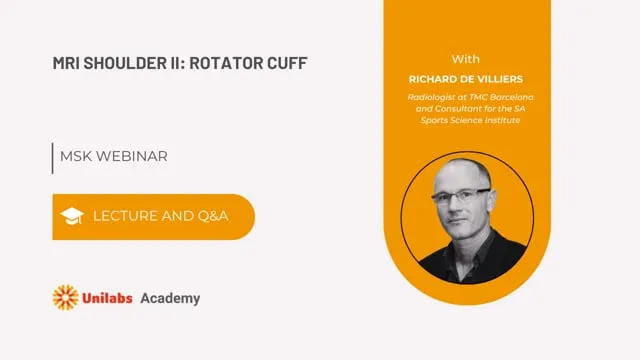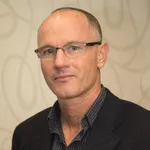
0.5 CME Credit
·
Musculoskeletal Radiology
MRI shoulder II: Rotator cuff
Already have an account?
Topics Covered
To jump to a specific chapter, click on the chapter title once the video is playing.
00:00 - Introduction and Overview of Rotator Cuff Imaging
01:02 - Techniques for MRI and Ultrasound of the Shoulder
02:25 - Using Orthogram and Non-Orthographic Techniques
03:38 - Incorporating Advanced Imaging Techniques like ABER
04:42 - Essential Imaging Strategies with Shoulder Coils
05:36 - Review of Rotator Cuff and Shoulder Anatomy
08:15 - Impingement Syndrome and its Causes
09:58 - Causes and Imaging of Rotator Cuff Tears
11:08 - Distinguishing Between Full Thickness and Partial Tears
12:50 - Explaining the AVA Position in Shoulder Examination
14:47 - Diagnosing Tendon Pathology: Internal Impingement and Cuff Tear Arthropathy
15:43 - Rotator Cuff Atrophy and Gautelier Classification
17:03 - Misdiagnosed Conditions: Capsulitis and Other Mimickers
18:24 - Denervation Atrophy: Causes and Observations
20:21 - Conclusion and Invitation to TMC Courses
Lecturers

Richard de Villiers M.D.
South Africa, Cape Town
Radiologist at Telemedicine Clinic (Barcelona, Spain) and consultant for the SA Sports Science Institute (Cape Town, South Africa) and the Institute for Orthopaedics and Rheumatology (Stellenbosch, South Africa).
Dr. Richard de Villiers has a special interest in Musculoskeletal radiology, with a particular interest in the imaging of sports injuries. He completed his training at the University of Stellenbosch and is on the specialist register in South Africa, Qatar and the United Kingdom. He has published more than 49 articles in numerous peer-reviewed journals and has spoken at international, national and local congresses. He is a member of the International Skeletal Society. He is the chairperson of the South African Musculoskeletal Imaging Group. He serves on SAMSIG and SASMA as a committee member.
Founder of SportsRad, teleradiology solution.
Dr. de Villiers has a ton of experience and knowledge on MSK radiology and is pleased to share this knowledge with radiologists looking to subspecialise.




